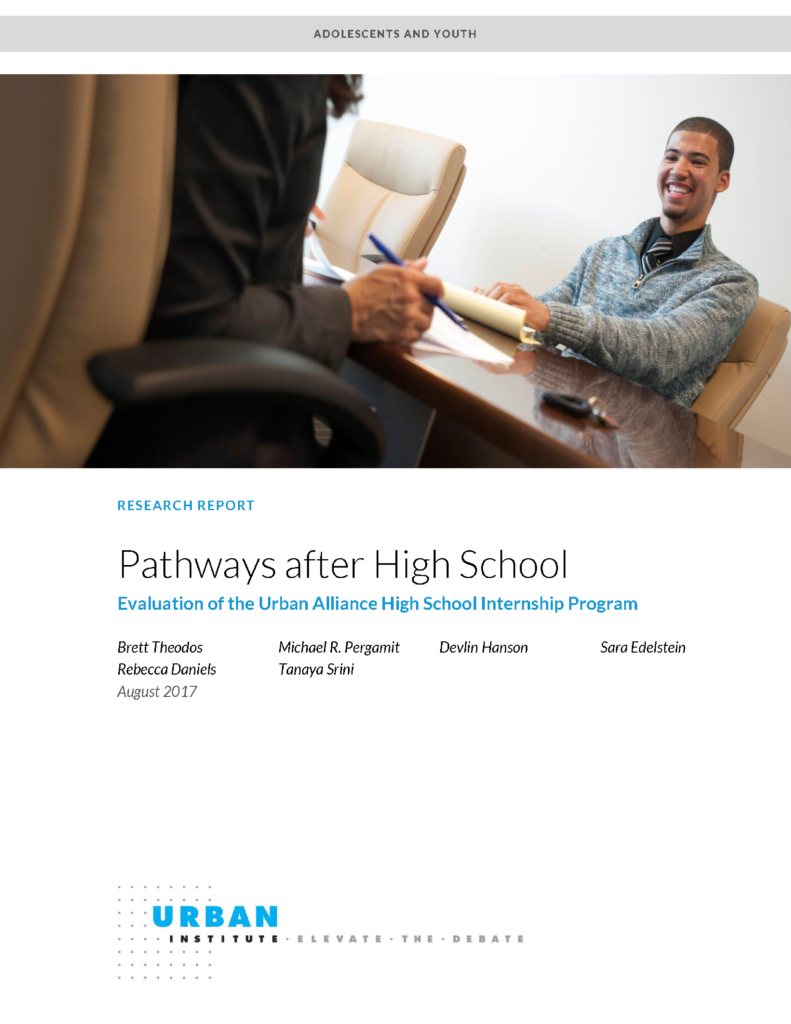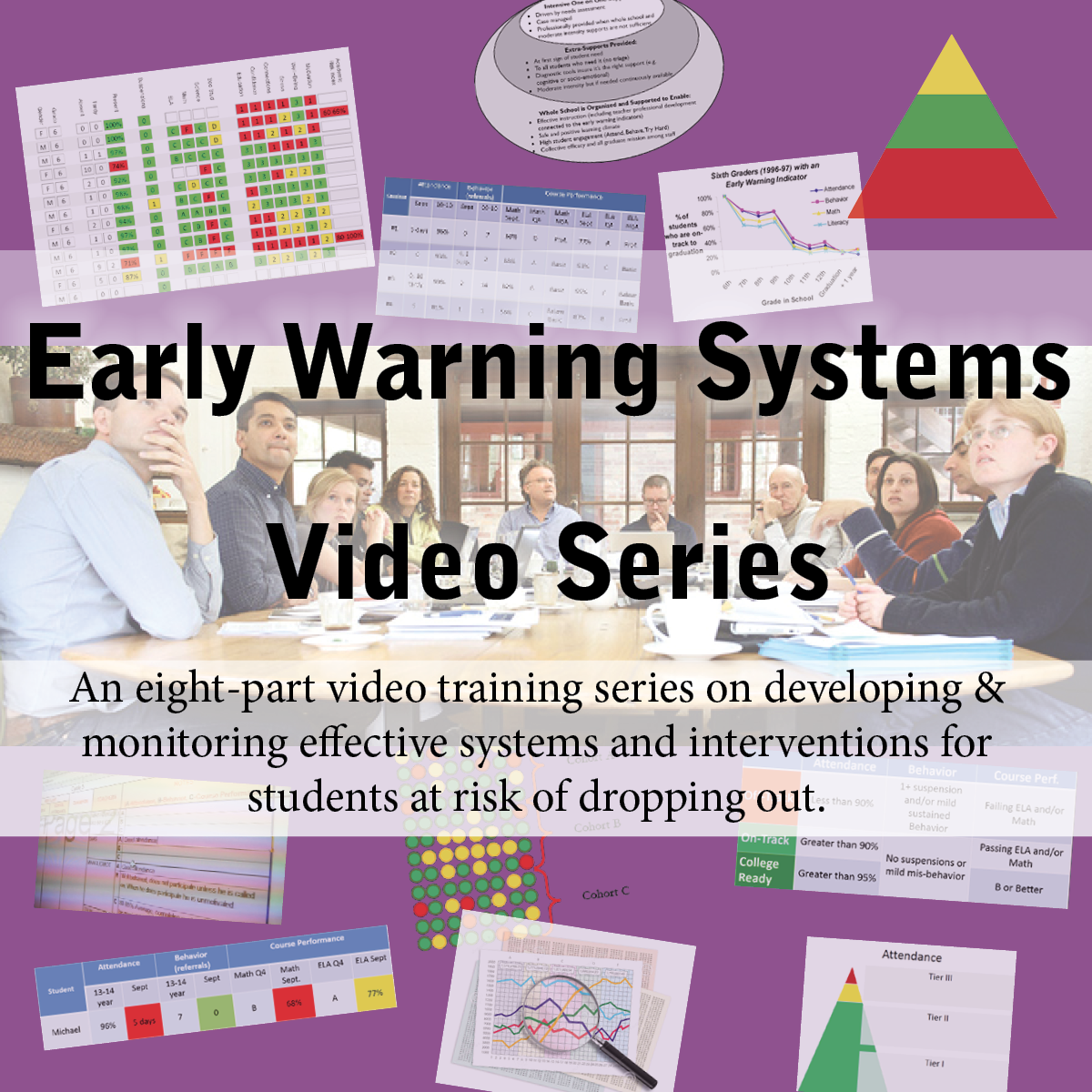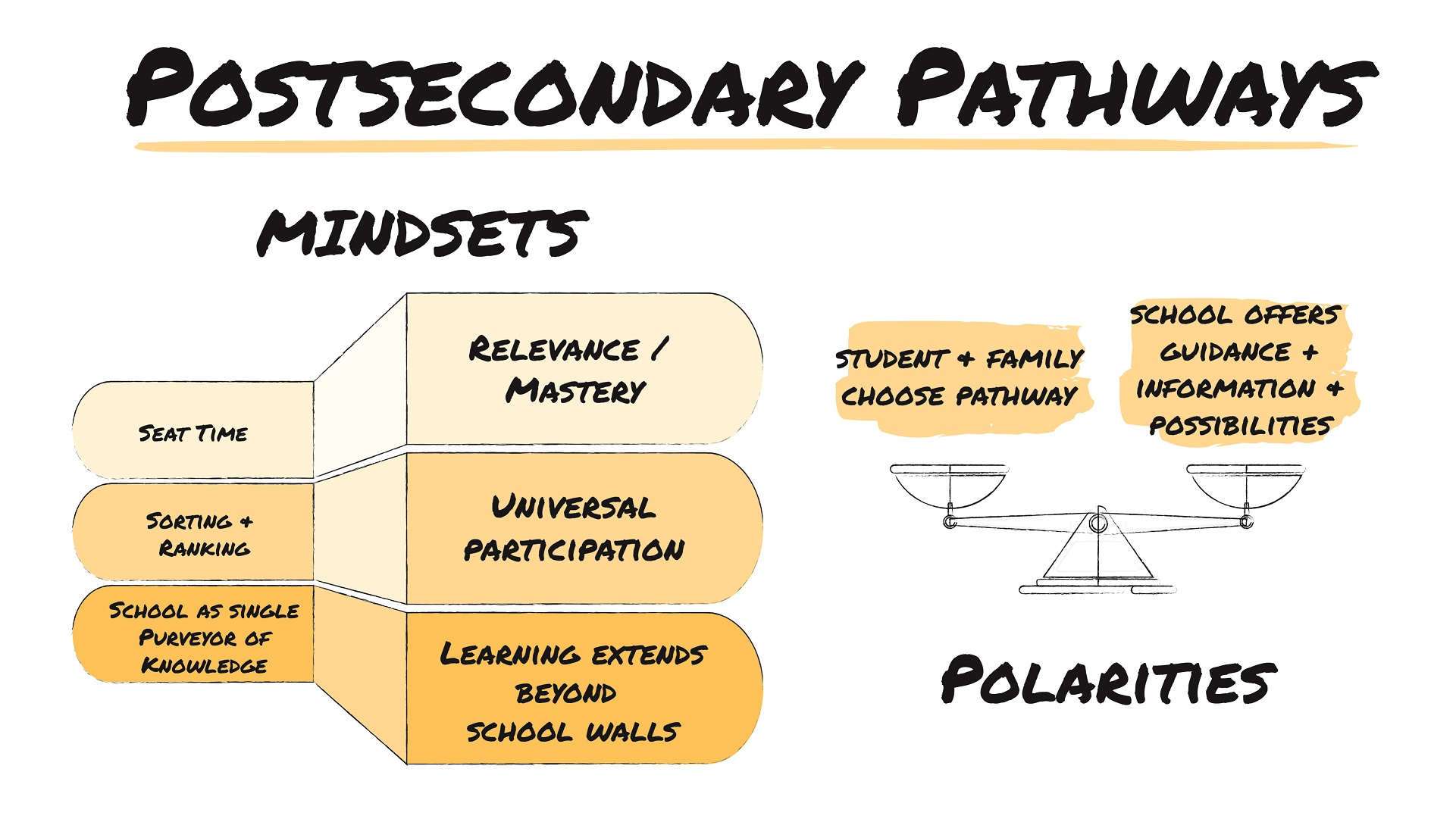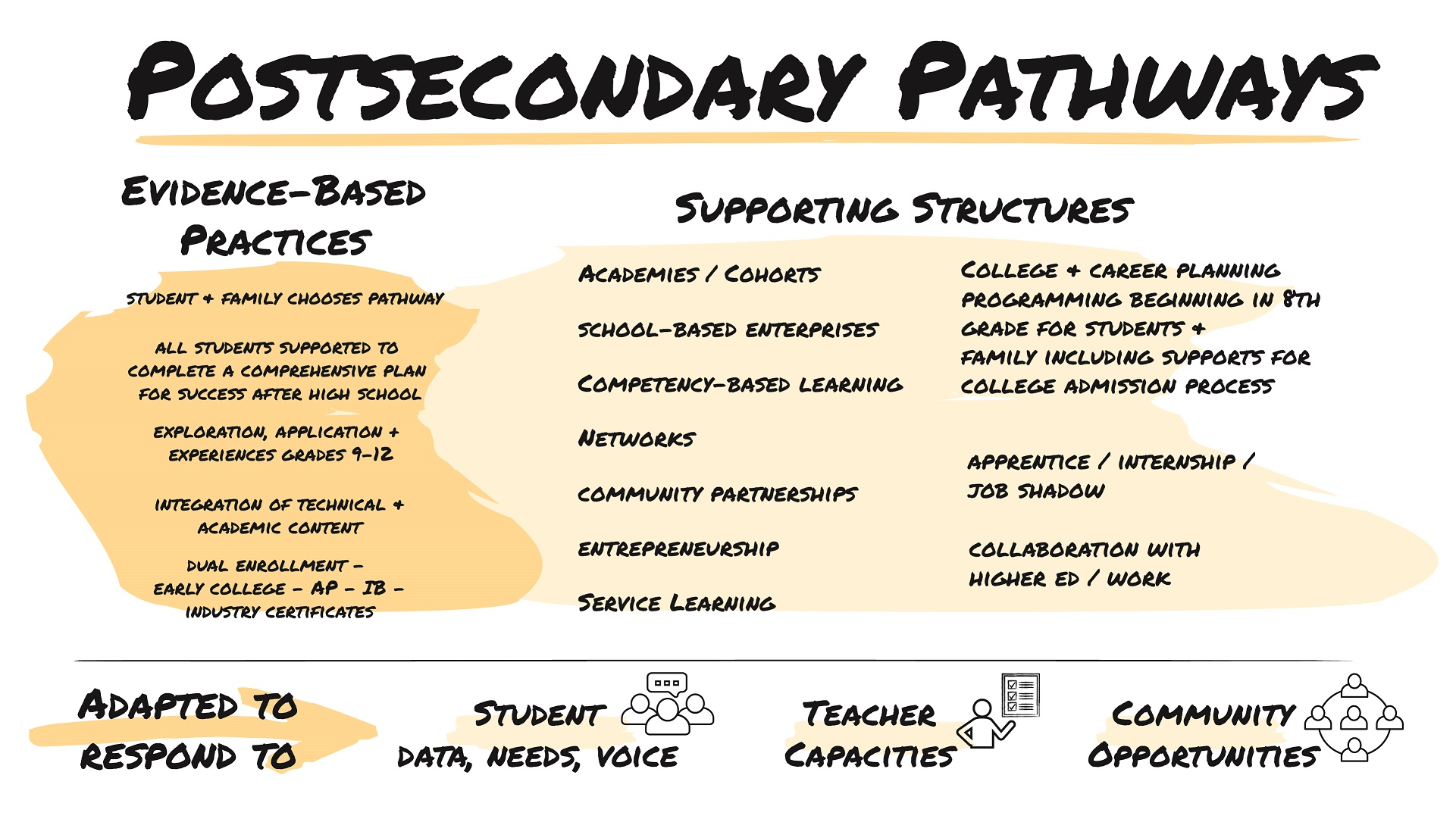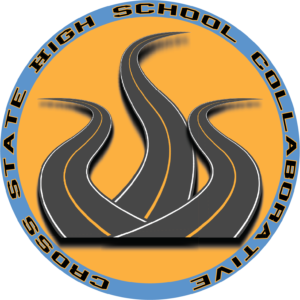 Postsecondary Pathways
Postsecondary Pathways
Redesigning the high school experience to enable all students to graduate with a strong and supported pathway to postsecondary success. Pathways should reflect high school as a beginning and not an ending.
The evidence identifies there core principals:
- Provide universal access and use of postsecondary preparations and guidance supports
- Keep students’ options open
- Keep the pathway choice with students and their families
- Collaborate beyond the school walls with families, employers, community partners, and postsecondary education partners
What the Evidence Says
These resources are summaries and synthesis of the evidence base for high school improvement. Also included are significant individual studies on key redesign and improvement practices.
Postsecondary Planning
How One School District is Giving ‘College-Ready’ New Meaning
“There’s the academic piece of college and then there’s the other 90 percent of doing college that a lot of our former students were finding challenging… It’s everything—how to study, how to advocate for yourself, how to manage your finances.”
In Kentucky, Bowling Green Superintendent Gary Fields and his team have taken bold steps to effectively bridge the gap between the high school and college experience. They’ve started a college-in-high-school program where seniors take college-style classes four days a week, with a specific set of supports and transition programming that help prepare them for the full experience. Read more…
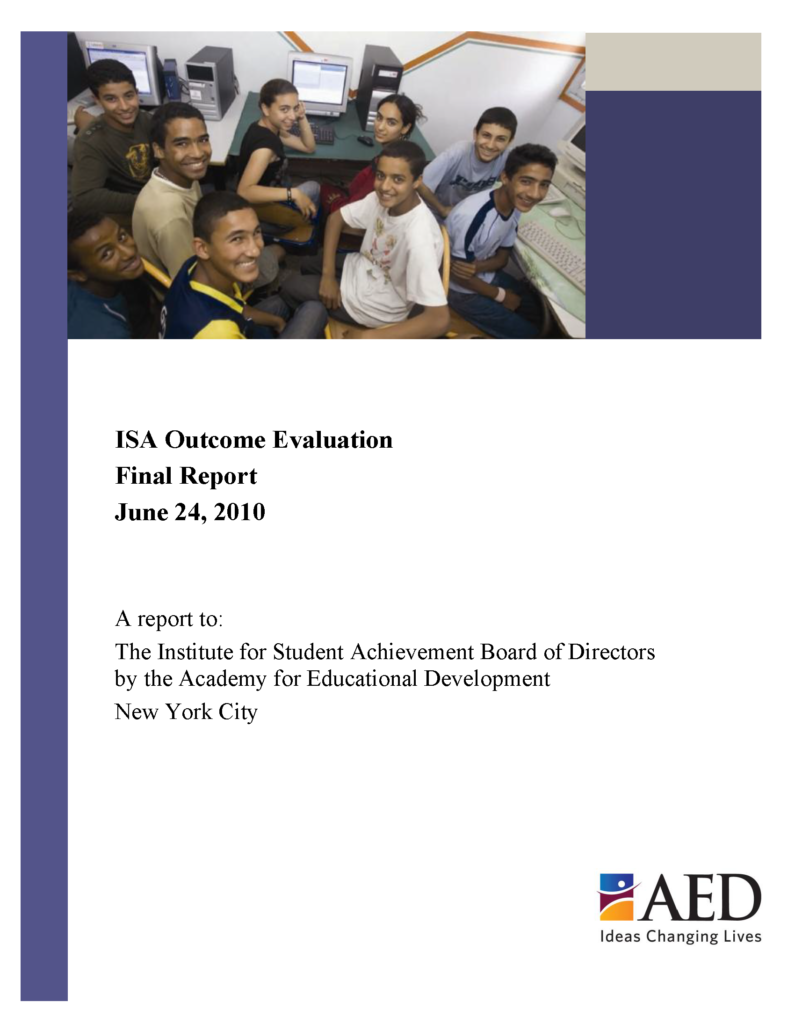 ISA Outcome Evaluation This report summarizes key findings from Academy for Educational Development’s external evaluation of the Institute for Student Achievement (ISA). The six-year evaluation investigated the following key questions: 1) What are the outcomes for ISA students in terms of high school and college achievement?, and 2), How do outcomes for ISA students compare with those of similar students in non-ISA schools? Download the Report (PDF)
ISA Outcome Evaluation This report summarizes key findings from Academy for Educational Development’s external evaluation of the Institute for Student Achievement (ISA). The six-year evaluation investigated the following key questions: 1) What are the outcomes for ISA students in terms of high school and college achievement?, and 2), How do outcomes for ISA students compare with those of similar students in non-ISA schools? Download the Report (PDF)
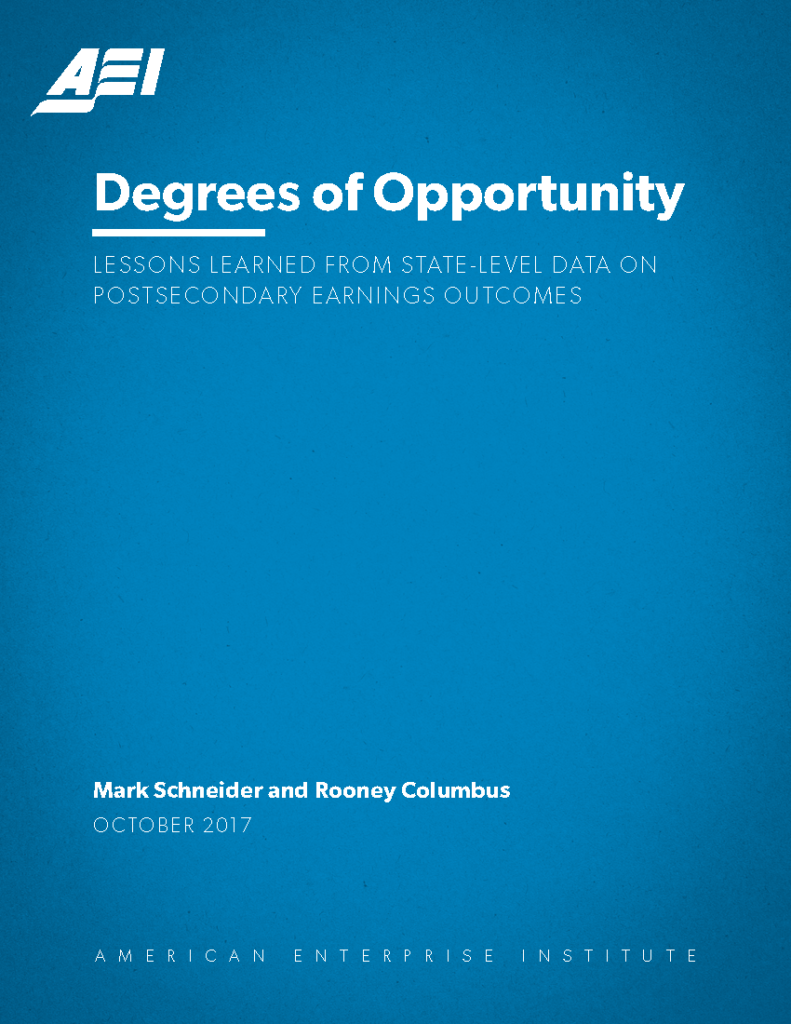 Degrees of Opportunity from AEI provides lessons learned from state-level data on post-secondary earnings outcomes and shows if we move beyond our current on the bachelor’s degree and widen the aperture to include all the post-secondary pathways at our disposal, far more educational options emerge that can lead students to economic success. Download the Reports (PDF)
Degrees of Opportunity from AEI provides lessons learned from state-level data on post-secondary earnings outcomes and shows if we move beyond our current on the bachelor’s degree and widen the aperture to include all the post-secondary pathways at our disposal, far more educational options emerge that can lead students to economic success. Download the Reports (PDF)
- Work-Based Learning Tool Kit This tool kit will provide state and local program administrators with information regarding the key components of work-based learning (WBL), an instructional strategy that enhances classroom learning by connecting it to the workplace. It offers guidelines and resources related to creating a state WBL strategy, engaging employers, collecting data, and scaling effective programs. at: https://cte.ed.gov/toolkit/index.html
- WWC Intervention Report: Career Academies this report by the Institute of Education Sciences focuses on Career Academies with a school-within-a-school structure. Each academy has a career theme, such as health care, finance, technology, communications, and public service. Download the Report (PDF)
- WWC Intervention Report: Dual Enrollment in the five studies that meet WWC group design standards, students were able to accumulate college credits either through a dual enrollment program or an early college high school program. Report issued by the Institute of Education Sciences. Download the Report (PDF)
- New Pathways to Careers and College Examples, Evidence, and Prospects is an April, 2015 report MDRC which describes some of the most prominent CTE (career-technical education) “pathway” models. Download the Report (PDF)
- Dual-Credit Courses and the Road to College: Experimental Evidence from Tennessee Dual-credit courses expose high school students to college-level content and provide the opportunity to earn college credits. The Tennessee Department of Education conducted its first randomized controlled trial of the effects of dual-credit math coursework on a range of high school and college outcomes. Download the Report (PDF) New Pathways to Careers and College: Examples, Evidence, and Prospects from MDRC describes some of the most prominent of these “pathway” models, identifies localities where the approach has gained the most traction, discusses the underlying principles that characterize the most promising programs, and briefly presents the evidence of their potential to make a difference. The report concludes with a set of recommendations for future investment to strengthen and scale such programs. Download the Report (PDF)
Internships, Apprenticeships & Mentoring
Healthcare & Medical Field Mentoring Understand the key benefits, explore mentorship programs for students and professionals, and learn how to build strong mentee-mentor relationships at: https://www.edumed.org/resources/mentorship-in-healthcare/
Pathways After High School the Urban Alliance commissioned the Urban Institute to conduct a six-year, randomized controlled trial impact and process evaluation of its High School Internship Program. A first report (Theodos et al. 2014) provided a process analysis of the program and baseline information about Urban Alliance and the youth participating in its High School Internship Program in Washington, DC, and Baltimore in the 2011–12 and 2012–13 program years. A second report (Theodos, Pergamit, Hanson, et al. 2016) shared interim impact findings. This report describes final impact findings. Download the Report (PDF)
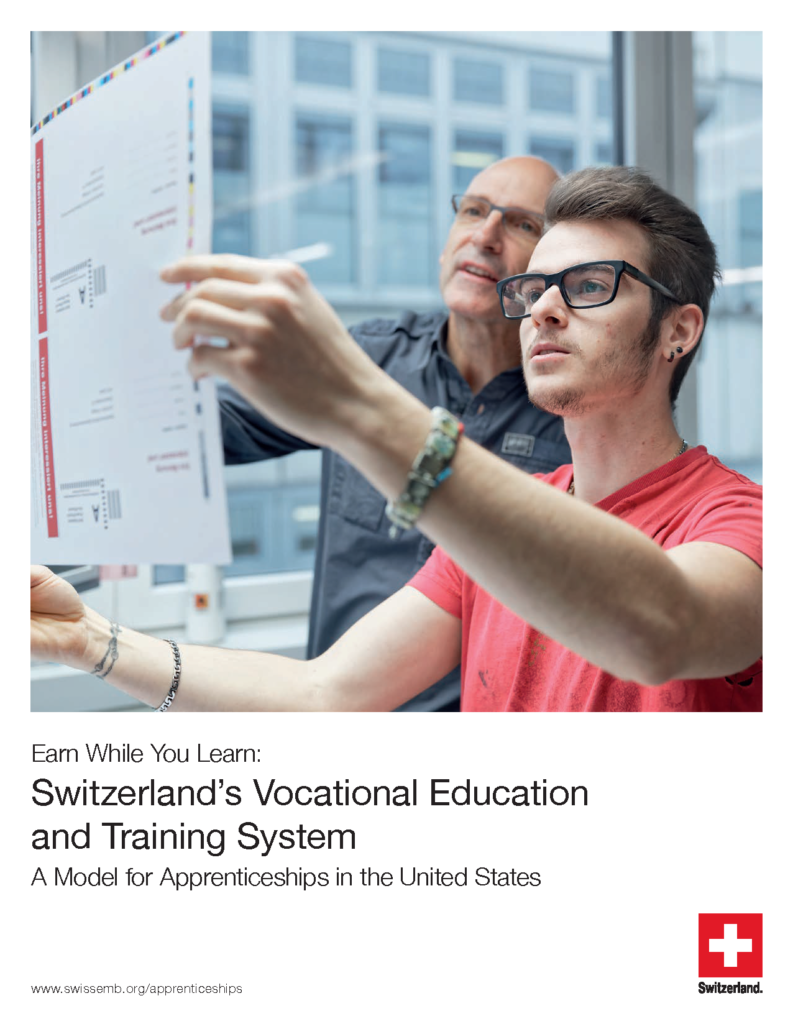 Earn While You Learn: Switzerland’s Vocational Education and Training System In countries such as Switzerland, Germany, and Austria, apprenticeships are an integral part of the educational system. Recently, the United States has shown increasing interest in learning more about the Swiss model and other European models. This brochure explains the key characteristics of the Swiss model, highlights Swiss-U.S. cooperation, and discusses current initiatives in the field. Download the Report (PDF)
Earn While You Learn: Switzerland’s Vocational Education and Training System In countries such as Switzerland, Germany, and Austria, apprenticeships are an integral part of the educational system. Recently, the United States has shown increasing interest in learning more about the Swiss model and other European models. This brochure explains the key characteristics of the Swiss model, highlights Swiss-U.S. cooperation, and discusses current initiatives in the field. Download the Report (PDF)
Linking Learning to Postsecondary Pathways
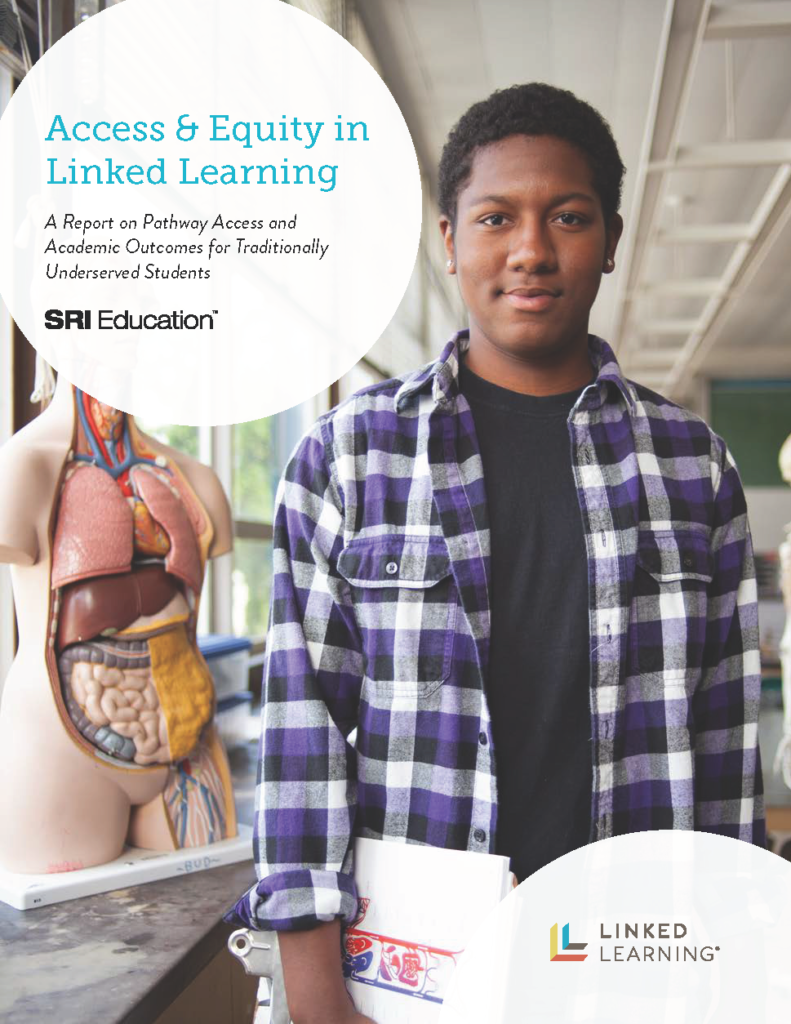 Access & Equity in Linked Learning a report issued by Linked Learning on pathway access and academic outcomes for traditionally under-served students. Download the Report (PDF)
Access & Equity in Linked Learning a report issued by Linked Learning on pathway access and academic outcomes for traditionally under-served students. Download the Report (PDF)
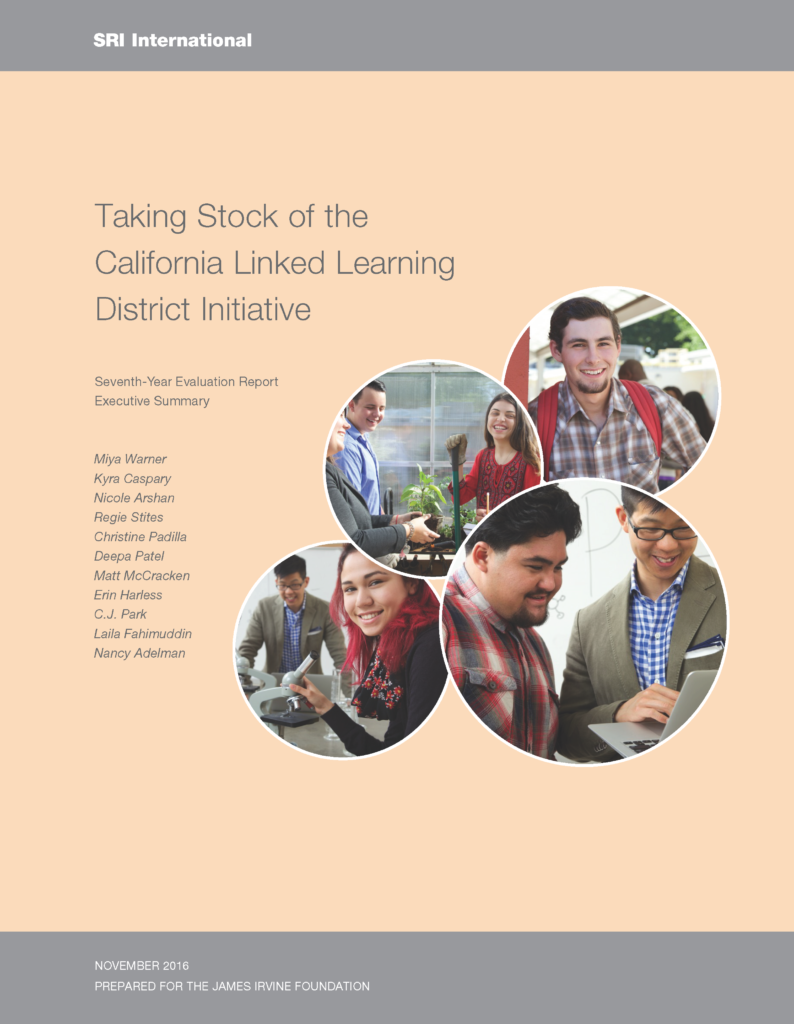 Taking Stock of the California Linked Learning District Initiative the Executive Summary from the Seventh-Year Evaluation Report prepared by the James Irvine Foundation in November, 2016. Download the Summary (PDF)
Taking Stock of the California Linked Learning District Initiative the Executive Summary from the Seventh-Year Evaluation Report prepared by the James Irvine Foundation in November, 2016. Download the Summary (PDF)
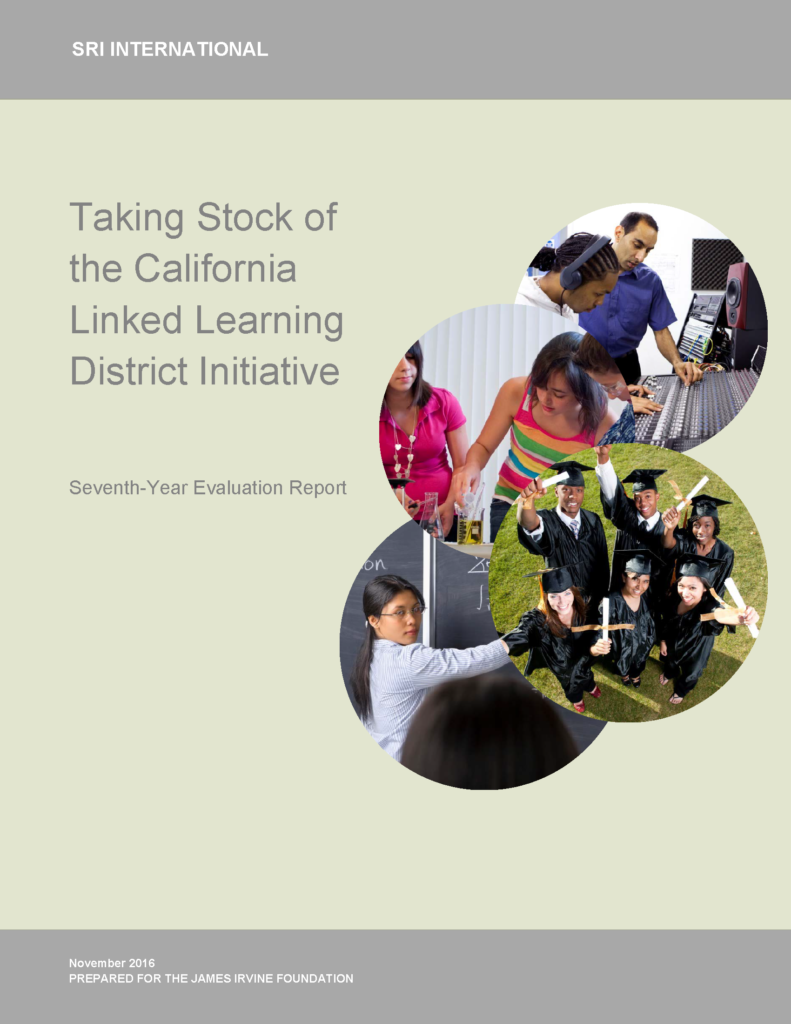 Taking Stock of the California Linked Learning District Initiative the complete Seventh-Year Evaluation Report prepared by the James Irvine Foundation in November, 2016. Download the Report (PDF)
Taking Stock of the California Linked Learning District Initiative the complete Seventh-Year Evaluation Report prepared by the James Irvine Foundation in November, 2016. Download the Report (PDF)
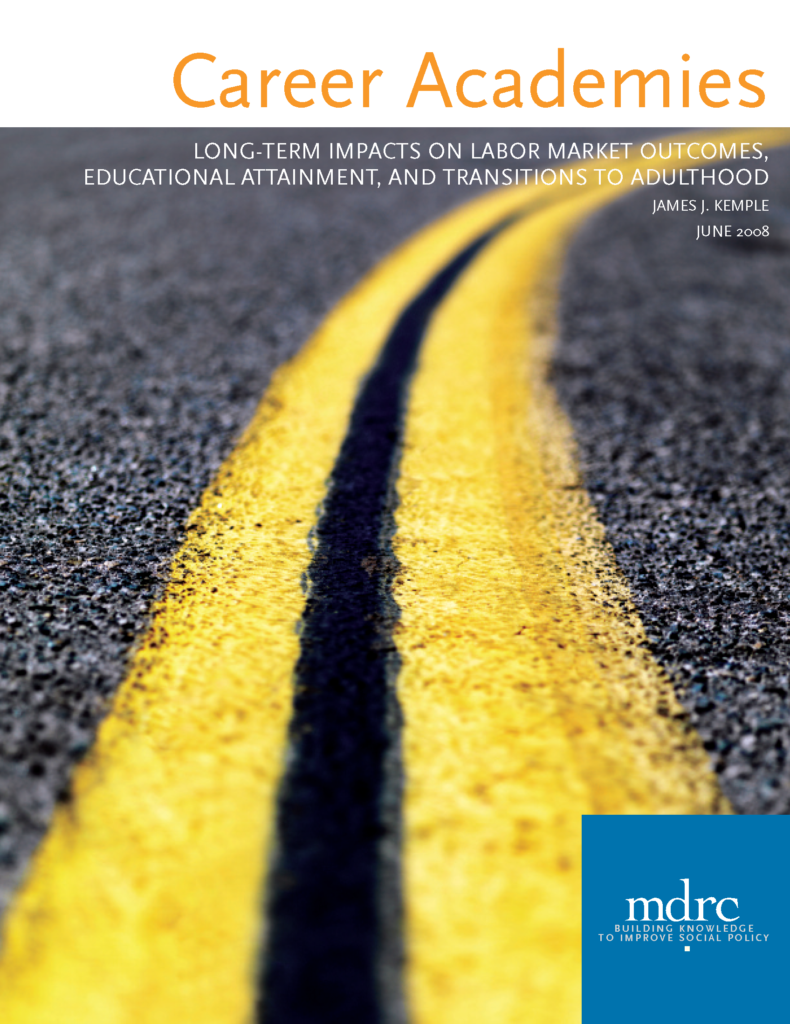 Career Academies from MDRC examines the evidence of career academies and their long-term impacts on the labor market outcomes, educational attainment, and transitions to adulthood. Download the Report (PDF)
Career Academies from MDRC examines the evidence of career academies and their long-term impacts on the labor market outcomes, educational attainment, and transitions to adulthood. Download the Report (PDF)
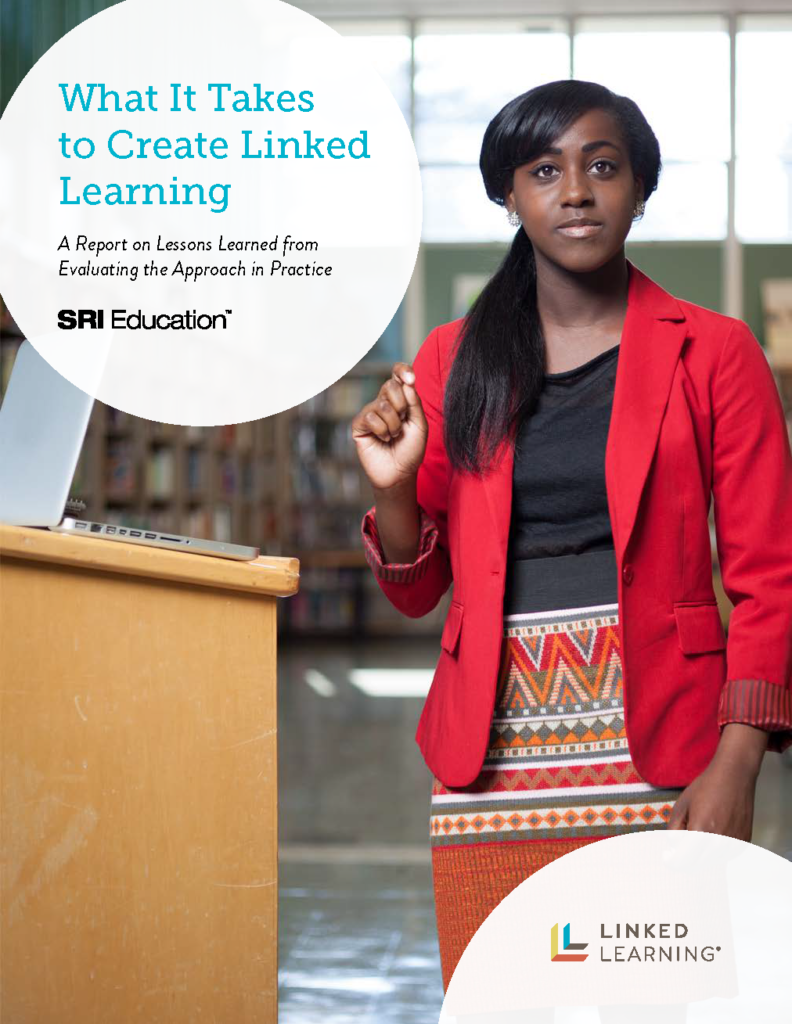 What it Takes to Create Linked Learning a 2016 report issued by Linked Learning on lessons learned from evaluation the approach of in practice. Click to download (PDF)
What it Takes to Create Linked Learning a 2016 report issued by Linked Learning on lessons learned from evaluation the approach of in practice. Click to download (PDF)
- Linking the Timing of Career and Technical Education Coursetaking With High School Dropout and College-Going Behavior from the American Educational Research Journal reports that CTE course taking in high school was linked to lower chances of dropout and increased chances of on-time graduation, especially when these courses were taken later in high school. Download the Report (PDF)
Pathways to Adult Success
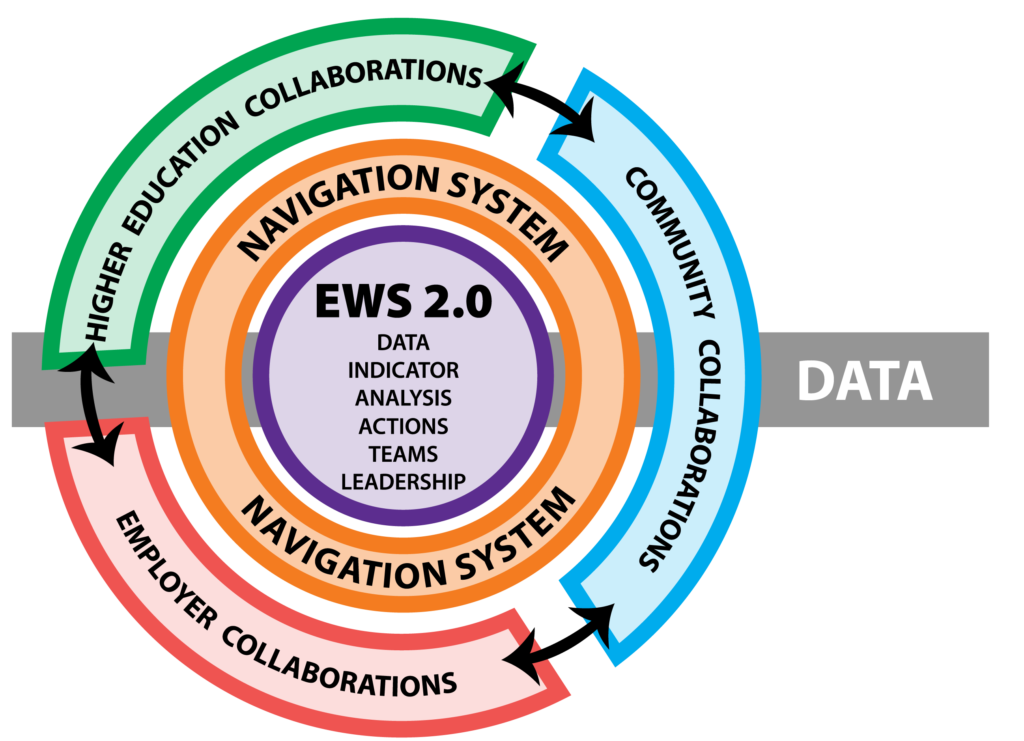 The vision of Pathways to Adult Success is for schools, their systems and communities to enable all youth, regardless of their needs, circumstances, place of residence, and prior experiences, to obtain the competencies needed to persist and complete secondary schooling and a post-secondary pathway that leads to a family-supporting wage and adult success. Visit their website.
The vision of Pathways to Adult Success is for schools, their systems and communities to enable all youth, regardless of their needs, circumstances, place of residence, and prior experiences, to obtain the competencies needed to persist and complete secondary schooling and a post-secondary pathway that leads to a family-supporting wage and adult success. Visit their website.
Implementing Evidence-Based Strategies
The evidence base shows that redesigning postsecondary pathways should include:
- Seeing high school as a beginning and not an ending,
- Keeping students’ options open
- Keeping the pathway choice with students and their families
- Collaborating beyond the school walls with families, employers, community partners and postsecondary education providers
Career and Technical Pathways
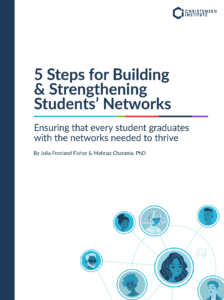 An estimated half of all jobs come through personal connections. And even earlier in the educational pipeline, students’ networks are proven to shape their career ambitions.
An estimated half of all jobs come through personal connections. And even earlier in the educational pipeline, students’ networks are proven to shape their career ambitions.
Network-building must be woven throughout education and workforce pathways . This playbook highlights strategies to build and strengthen students’ networks. Download the PDF
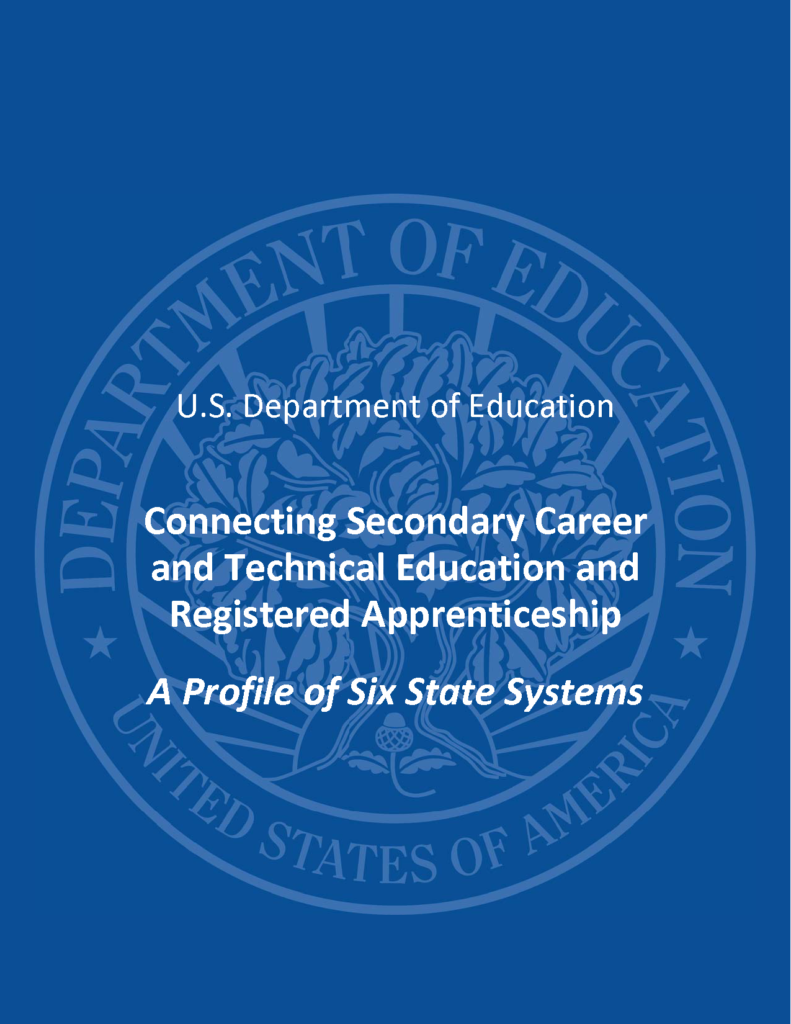 Connecting Secondary Career and Technical Education and Registered Apprenticeship: A Profile of Six State Systems Connecticut, Florida, Kentucky, North Carolina, Rhode Island, and Washington states were profiled in this report are using a range of approaches to align secondary Career Technical Education with Registered Apprenticeships. Produced by the US Department of Education. Download the Report (PDF)
Connecting Secondary Career and Technical Education and Registered Apprenticeship: A Profile of Six State Systems Connecticut, Florida, Kentucky, North Carolina, Rhode Island, and Washington states were profiled in this report are using a range of approaches to align secondary Career Technical Education with Registered Apprenticeships. Produced by the US Department of Education. Download the Report (PDF)
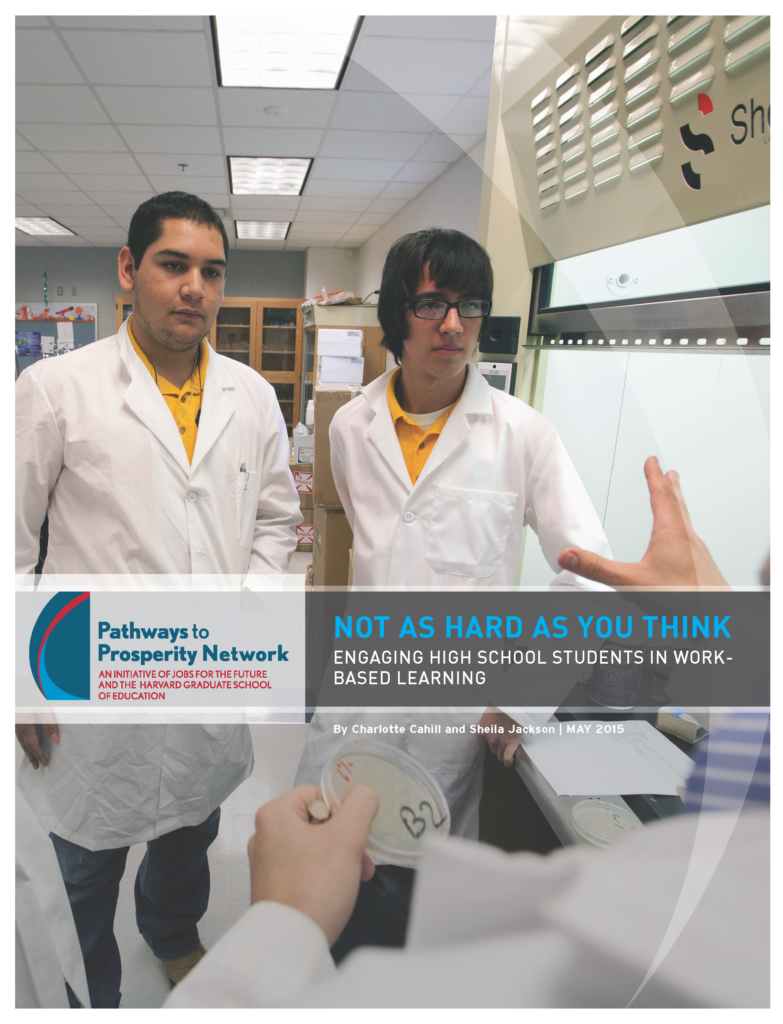 Not as Hard as You Think is a report which details engaging high school students in work-based learning. Prepared by Jobs for the Future in conjunction with The Pathways to Prosperity Network.
Not as Hard as You Think is a report which details engaging high school students in work-based learning. Prepared by Jobs for the Future in conjunction with The Pathways to Prosperity Network.
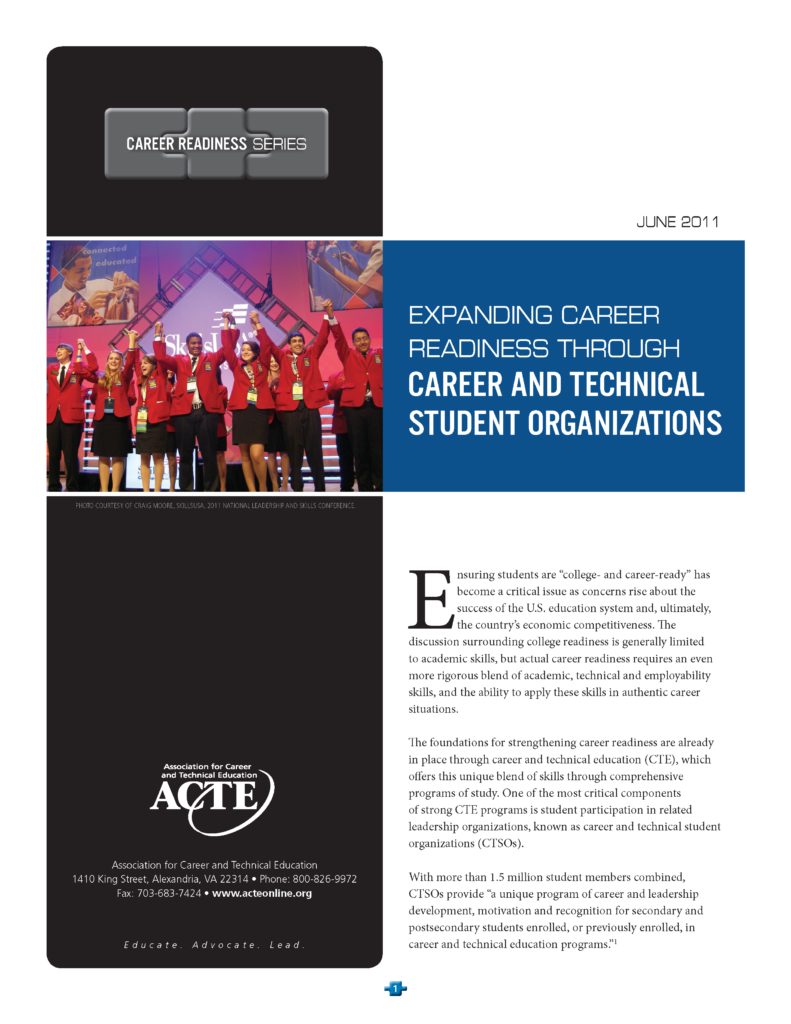 Expanding Career Through Career and Technical Student Organizations an entry in ACTE’s (Association for Career and Technical Education) “Career Readiness Series” examines the benefits of CTSOs for strengthening students career readiness. Download the Report (PDF)
Expanding Career Through Career and Technical Student Organizations an entry in ACTE’s (Association for Career and Technical Education) “Career Readiness Series” examines the benefits of CTSOs for strengthening students career readiness. Download the Report (PDF)
- Credential Matter Report published in May, 2019 and sourced by ExcelinEd and Burning Glass technologies providing a national landscape of HS student credential compared to workforce demand at: https://www.excelined.org/credentials-matter/
- Ohio leadership calling to increase focus on career and technical education particularly a push for industry-recognized credentials (IRCs) leading to jobs and healthier statewide economy at: https://fordhaminstitute.org/ohio/commentary/more-ohio-students-are-earning-industry-recognized-credentials?utm_source=Fordham+Institute+Newsletters+%26+Announcements&utm_campaign=1d86e9f3c9-skeleton_COPY_01&utm_medium=email&utm_term=0_5fa2df08a3-1d86e9f3c9-71892277&mc_cid=1d86e9f3c9&mc_eid=4bc9a22001
Work-Based Learning
Work-Based Learning Tools from Rocinante High School in New Mexico’s Farmington Municipal Schools share these Work-Based Learning Program implementation documents.
Engaging Community Support
Video: Report Card Conferences – Report Card Conferences are held between students and non-school affiliated adults. Caring adults, which are typically caring adults from the community, review a student’s report card along with their Attendance, Behavior, and Course Performance. RCCs give students the opportunity to speak with caring adults who reinforce the value of success in school and encourage them to get help when experiencing difficulty.
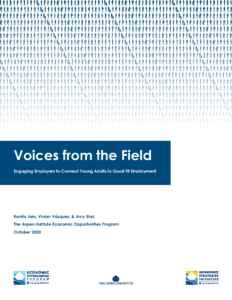 Voices from the Field Engaging Employers to Connect Young Adults to Good Fit Employment This report provides information about workforce development practice based on responses to a survey conducted in fall 2019 and winter 2020 in three Generation Work communities: Cleveland, Indianapolis and Philadelphia. Responses from 210 professionals, who shared information about the questions they ask business representatives, help us understand the types of conversations about job opportunities and workforce management practices that are taking place. Download the PDF
Voices from the Field Engaging Employers to Connect Young Adults to Good Fit Employment This report provides information about workforce development practice based on responses to a survey conducted in fall 2019 and winter 2020 in three Generation Work communities: Cleveland, Indianapolis and Philadelphia. Responses from 210 professionals, who shared information about the questions they ask business representatives, help us understand the types of conversations about job opportunities and workforce management practices that are taking place. Download the PDF
Providing Equitable & Accessible Pathways
 An estimated half of all jobs come through personal connections. And even earlier in the educational pipeline, students’ networks are proven to shape their career ambitions.
An estimated half of all jobs come through personal connections. And even earlier in the educational pipeline, students’ networks are proven to shape their career ambitions.
Network-building must be woven throughout education and workforce pathways . This playbook highlights strategies to build and strengthen students’ networks. Download the PDF
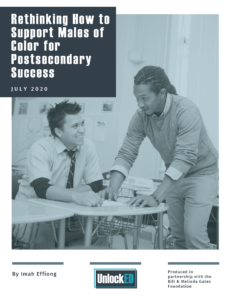 Rethinking How to Support Males of Color for Postsecondary Success This paper is to examines the programmatic and systemic initiatives that district leaders are implementing to increase postsecondary success for males of color and to summarize and provide insights to district leaders who are engaging in this work. Download the PDF
Rethinking How to Support Males of Color for Postsecondary Success This paper is to examines the programmatic and systemic initiatives that district leaders are implementing to increase postsecondary success for males of color and to summarize and provide insights to district leaders who are engaging in this work. Download the PDF
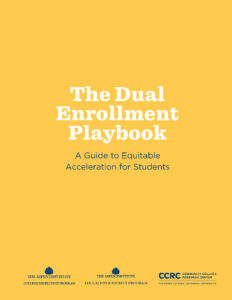 The Dual Enrollment Playbook: A Guide to Equitable Acceleration for Students Five design principles for equitable dual enrollment programs. Download the PDF
The Dual Enrollment Playbook: A Guide to Equitable Acceleration for Students Five design principles for equitable dual enrollment programs. Download the PDF
 Since 1968, the Civil Rights Data Collection (CRDC), has collected data on key education and civil rights issues in our nation’s public schools for use by the Department of Education’s Office for Civil Rights (OCR) in its enforcement and monitoring efforts regarding schools’ and districts’ obligation to provide equal educational opportunity. The data collected in Issue Brief No. 3 (March, 2014) highlighted college & career readiness. Download the Report (PDF)
Since 1968, the Civil Rights Data Collection (CRDC), has collected data on key education and civil rights issues in our nation’s public schools for use by the Department of Education’s Office for Civil Rights (OCR) in its enforcement and monitoring efforts regarding schools’ and districts’ obligation to provide equal educational opportunity. The data collected in Issue Brief No. 3 (March, 2014) highlighted college & career readiness. Download the Report (PDF)
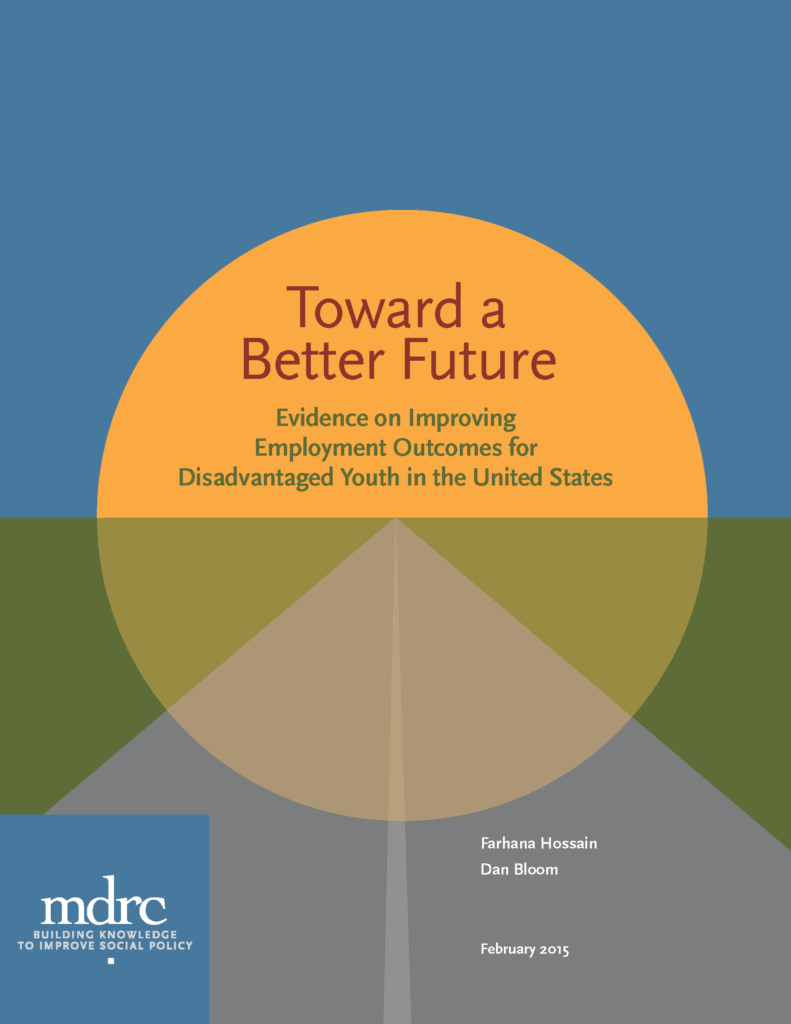 Toward a Better Futurecontains evidence on improving employment outcomes for disadvantaged youth in the United States. Prepared in February, 2015 by MDRC. Click to download (PDF)
Toward a Better Futurecontains evidence on improving employment outcomes for disadvantaged youth in the United States. Prepared in February, 2015 by MDRC. Click to download (PDF)
- More than an Application from the Research Alliance for New York City Schools examines how New York City Schools offer a comprehensive college and career planning program to students and families beginning in the freshman year. It also provides an example of how to provide all students support to complete a comprehensive plan for success after high school. Download the Report (PDF)
-
Systems of Inequity Have Been Designed by People, and They Can Be Redesigned: Interview with Caroline Hill
Caroline Hill is a catalyst for equity and founder of the DC Equity Lab and co-founder of the Equity Design Collaborative—two emerging nodes in the education equity ecosystem. The DC Equity Lab invests in early stage education ventures in Washington, D.C. and enables them to design solutions that create and scale equity in schools, organizations, and communities. Read the interview at: https://www.aspeninstitute.org/blog-posts/systems-inequity-designed-people-can-redesigned/
This interview is part of the Aspen Institute Center for Urban Innovation’s series of conversations with inclusive innovation practitioners.
- 10 Strategies, Not Just Skills, to Expanding Career Pathways Social networks and relationships function as something of an unspoken currency in the world of work. An estimated half of all jobs come through personal connections. And even earlier in the educational pipeline, students’ networks are proven to shape their career ambitions. Read the article at: https://www.christenseninstitute.org/blog/10-strategies-for-expanding-networks-not-just-skills-to-expand-career-pathways/?utm_source=Ed+Digest&utm_medium=email&utm_campaign=7/2/21
College and Postsecondary Education
Podcast: Measuring Progress Toward College & Career Readiness
Michele Cahill hosts a conversation with three experts on how to measure and evaluate performance in schools. Featuring: Andy Calkins Deputy Director of Next Generation Learning Challenges Karen Pittman CEO of Forum for Youth Investment Antonia Rudenstine Co-Director of reDesign. Click to listen to the Podcast.
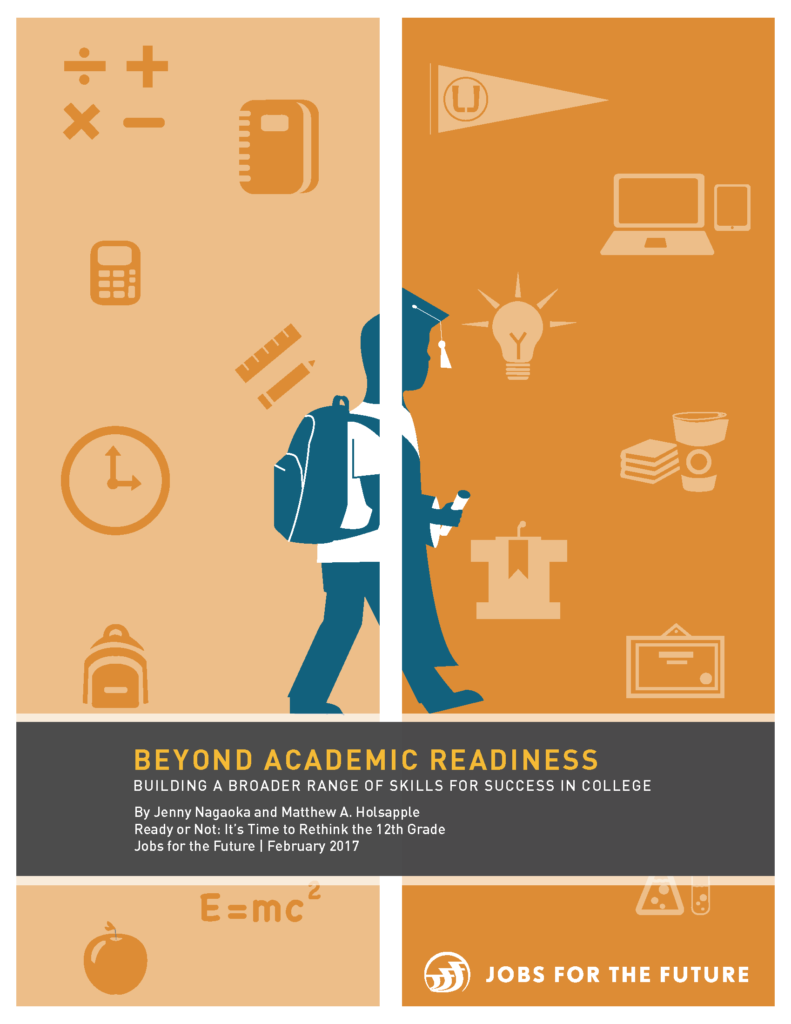 Beyond Academic Readiness – Building a Broader Range of Skills for Success in College The journey from high school to higher education is much more complicated than policymakers tend to imagine. For most students, it is a major life transition—one requiring them to take risks that are not just academic and financial, but deeply personal, raising difficult questions about identity, belonging, purpose, and more. This report, part of a series, that encourages high schools and higher education to share responsibility for increasing the number of students who are prepared to enter college and earn a postsecondary credential. Read overview of the series. Download the Report (PDF)
Beyond Academic Readiness – Building a Broader Range of Skills for Success in College The journey from high school to higher education is much more complicated than policymakers tend to imagine. For most students, it is a major life transition—one requiring them to take risks that are not just academic and financial, but deeply personal, raising difficult questions about identity, belonging, purpose, and more. This report, part of a series, that encourages high schools and higher education to share responsibility for increasing the number of students who are prepared to enter college and earn a postsecondary credential. Read overview of the series. Download the Report (PDF)
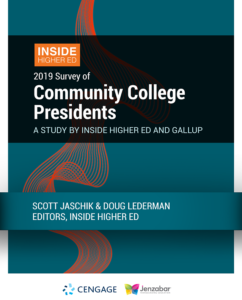 Community colleges in 25 states offer bachelor’s degrees, and more states are considering allowing community colleges to do so. The practice is not very common, however, as just 10 percent of community college presidents report that their institution is offering bachelor’s degrees, with most of these saying their college offers “a few bachelor’s degree programs.” Only 1 percent say their college offers “a wide range of bachelor’s degree programs.” Download the Report (PDF)
Community colleges in 25 states offer bachelor’s degrees, and more states are considering allowing community colleges to do so. The practice is not very common, however, as just 10 percent of community college presidents report that their institution is offering bachelor’s degrees, with most of these saying their college offers “a few bachelor’s degree programs.” Only 1 percent say their college offers “a wide range of bachelor’s degree programs.” Download the Report (PDF)
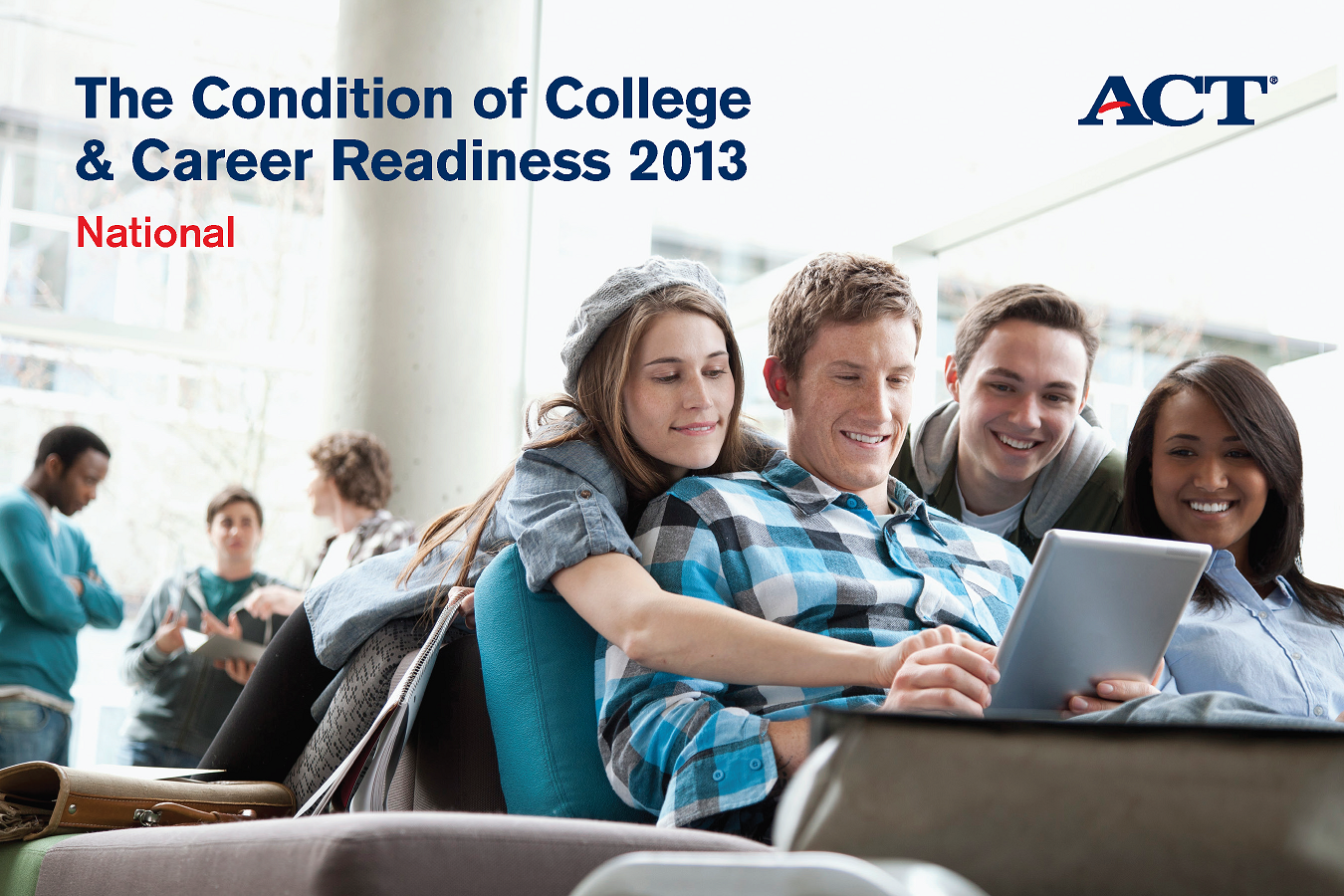 For nearly a decade, ACT has measured student progress in the context of college readiness. The Condition of College & Career Readiness is ACT’s annual report on the college readiness of the most recent high school graduating class. The data herein provide insights to catalyze and guide efforts to improve college and career readiness for the next generation of young people now making their way through the US education system. Download the Report (PDF)
For nearly a decade, ACT has measured student progress in the context of college readiness. The Condition of College & Career Readiness is ACT’s annual report on the college readiness of the most recent high school graduating class. The data herein provide insights to catalyze and guide efforts to improve college and career readiness for the next generation of young people now making their way through the US education system. Download the Report (PDF)
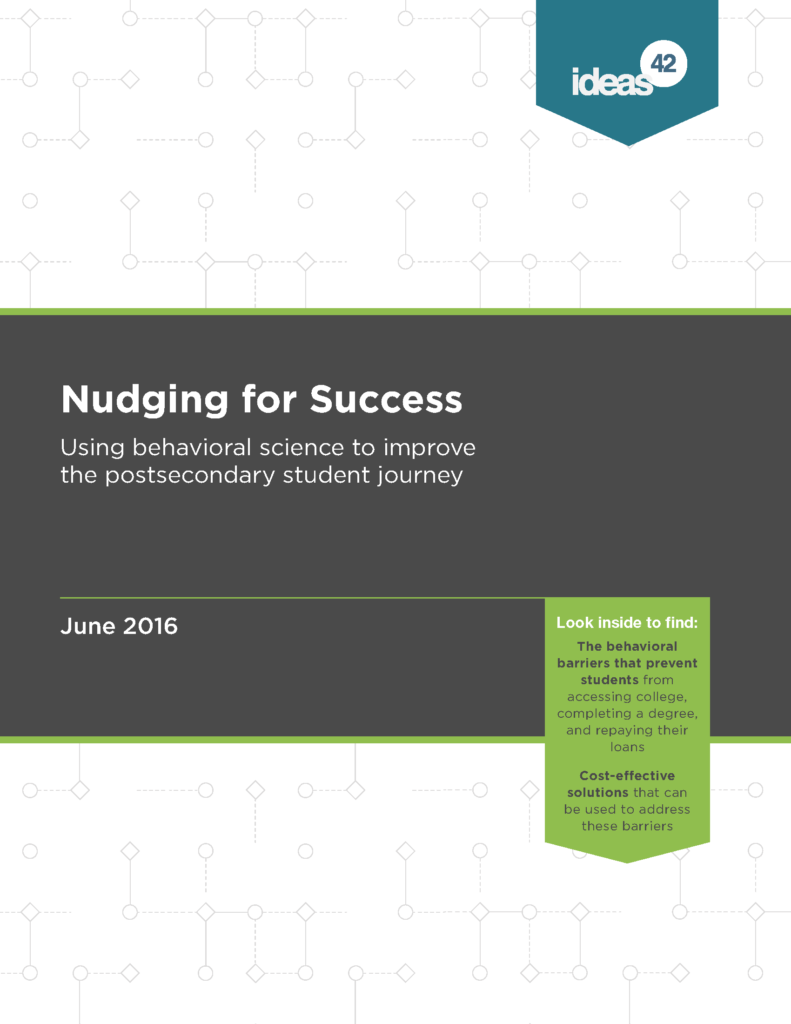 Nudging for Success examines the behavioral barriers that prevent students from accessing college, completing a degree, and repaying their loans and cost-effective solutions that can be used to address these barriers. Download the Report (PDF)
Nudging for Success examines the behavioral barriers that prevent students from accessing college, completing a degree, and repaying their loans and cost-effective solutions that can be used to address these barriers. Download the Report (PDF)
Early Warning Systems & Student Postsecondary Supports
This eight-part, in-depth series examines the benefits and steps to implement an effective Early Warning Indicator program.
The free videos and materials go far beyond how to collect and interpret EWI data. It also examines building a data culture, linking indicators to a tiered inteventions system, planning EWS for schools and districts, how to get an EWS started including, how to introduce school staff and faculty to the system, intervention review and data gap analysis and much more.
Visit the EWI video series home page.
The video series was developed by the Everyone Graduates Center at Johns Hopkins University School of Education in partnership with the New Mexico Public Education Department, and the High Plains Regional Education Cooperative.
- Beyond the Indicators: An Integrated School-Level Approach to Dropout Prevention from the Mid-Atlantic Equity Center summarizes the research on why students drop out of school, explains the research implications for how to create an integrated dropout prevention strategy, and highlights an innovative pilot project that yielded results in a matter of months—a how-to example that works. Download the Report (PDF)
Redesign in Action
See how these high schools are implementing evidence-based practices into their redesign.
Vicksburg Warren School District: Vicksburg, MS
“Mississippi Today’s” Gabriel Austin examines Vicksburg Warren School District’s efforts of a new pilot program that exempts it and two other school districts from some state laws to allow schools to be more innovative in tackling the challenge of achievement gaps, particularly between white and minority and low socioeconomic status students and their peers.
Iowa Big
This four-minute video tells the story of Iowa Big.
 Iowa BIG is a public school with no admissions requirements. Each partnering district has slots proportional to their financial commitment to the program. We currently serve an accurate cross section of our partner districts’ demographics. Visit Iowa BIG’s Website
Iowa BIG is a public school with no admissions requirements. Each partnering district has slots proportional to their financial commitment to the program. We currently serve an accurate cross section of our partner districts’ demographics. Visit Iowa BIG’s Website
High School 2020: Albemarle County, VA
High School 2022 is a district-wide initiative to design, refine and deliver the future of high school for graduates in the class of 2022 and beyond. The Virginia Department of Education is currently developing the Profile of a Virginia Graduate, a framework that will be used for the State Board’s revision of high school graduation requirements for students graduating in the class of 2022. High School 2022 in Albemarle County, Virginia will be influenced and responsive to the Profile of a Virginia Graduate.
Click here to watch a video about Profile of a Virginia Graduate featuring Billy K. Cannaday, Jr., President of VA’s Board of Education.
Click to visit ACHS’s website.
NUVU High School: Cambrige, MA
Nuvu, in Cambridge Massachusetts, is an innovative school based on a project-based studio model lead by coaches who are leaders in their industry, experts in diverse fields, and passionate thought leaders. Click to visit Nuvu’s website.
Tacoma School of the Arts: Tacoma, WA
The Tacoma School of the Arts began as an idea in 1998 and with the help of the Bill & Melinda Gates Foundation Model Schools Program, the Tacoma Public Schools, and a variety of partners in the local arts and business community, the Tacoma School of the Arts (TSOTA) opened in the Fall of 2001. The school’s proximity to cultural organizations was intentional in order to provide opportunities for students to engage in the community. Click to visit TSOA’s website.
Albemarle County High School: Charlottesville, VA
Checkout a day in the Life of several Albemarle County High School students as they have a variety of experiences to support postsecondary pathways.
Carl Wunsche Senior HS: Spring, TX
Carl Wunsche Senior High School in Spring, TX’s mission statement is, “To prepare students for lifelong learning and achievement by focusing on student career interests.” They place students on one of three industry career paths—technology, health and professions—and supplements their curriculum with real-world experience. Click to visit CWSHS’s website.
Tiger Ventures: New York
Tiger Ventures is a high school fully integrated with a new venture incubator. Created by the school district, it will serve as a site to assist in the economic growth and sustainability of the community and as an educational partner – providing both internships for students as part of their school day and professional development for teachers and staff. Click to visit Tiger Ventures’ website.
Shifting Mindsets on Postsecondary Pathways
Successful implementation of the pilars of redesign involves a shift from current mindsets to the evidence-based mindsets of redesign. To download the images, right-click the image and use the “Save As” funtion.
Media Center
Features the multimedia elements of the Postsecondary Pathways driver.
One of the CSHSC’s goals is to maintain a nationwide network to share resources and experiences with other educators dedicated to redesigning the high school experience for all students.
Have a resource to share? Please share any useful resource, tool, website, etc. that you found helpful during your redesign. . .click here to share
Have a story to tell? Please share any experience, anecdote, cautionary tale you encountered during your redesign. . .click here to share

